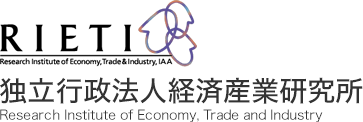| 執筆者 | 別所 俊一郎(早稲田大学)/田中 隆一(ファカルティフェロー)/野口 晴子(早稲田大学)/川村 顕(早稲田大学)/及川 雅斗(早稲田大学) |
|---|---|
| 発行日/NO. | 2025年8月 25-E-075 |
| 研究プロジェクト | 教育政策のミクロ計量分析 |
| ダウンロード/関連リンク |
概要
本稿では、小学6年生時の学力・体力ランクが中学3年生の学業・体力の結果に及ぼす影響を調査する。既存の文献では、学力順位がさまざまな結果に及ぼす影響について幅広く調査されているが、本研究では、学力順位と体力順位が同時に及ぼす影響について独自に調査している。首都圏の大規模自治体の行政データを用いて、小学6年生の順位と中学3年生の成績の関係を分析した。また、生徒の行動や意見に関するアンケートデータを用いて、これらの効果を促進するメカニズムを探る。その結果、小学6年生の学力と体力の順位と、それに対応する中学3年生の成績との間に正の相関があることが分かった。これらの順位効果はほぼ直線的であり、学業成績では男性ほど顕著であった。社会経済的地位や教師の性別による効果の有意な異質性は観察されなかった。学力と体力の間には波及効果は見られないが、数学の順位が高いほど国語の成績が良い。最後に、女子生徒では序列順位が高いほど意欲が高まるが、男子生徒では自分の能力に関する誤った情報効果が見られる。教師や親からの外的影響は検出されなかった。本研究は、生徒の成果を分析する際に学力と体力のランクを考慮することの重要性を浮き彫りにし、教育における相互影響のより包括的な理解に貢献するものである。
概要(英語)
This study investigated the impact of academic and physical fitness rankings in the sixth grade on the academic and physical fitness outcomes of ninth-grade students. While existing literature extensively explores the effects of academic rank on various outcomes, this study uniquely examines the concurrent influence of both academic and physical fitness ranks. We analyzed the relationship between sixth-grade rankings and ninth-grade performance using administrative data from a large municipality in the Tokyo metropolitan area of Japan. Additionally, we explored the mechanisms driving these effects using student questionnaire data on behaviors and opinions. We found a positive effect of sixth-grade ordinal ranks on both academic and physical fitness, as measured by the corresponding ninth-grade scores. These rank effects were largely linear and were more pronounced for males in terms of academic achievement. No significant heterogeneity in the effects was observed by socioeconomic status or the teacher’s gender. While no spillover effects exist between academic and physical fitness, a higher mathematics rank is correlated with better performance in Japanese language arts. Finally, higher ordinal ranks were associated with increased motivation among female students, whereas male students exhibited evidence of the effects of misinformation on their abilities. No external influences from teachers or parents were observed. This study highlights the importance of considering both academic and physical fitness rankings when analyzing student outcomes, thereby contributing to a more comprehensive understanding of peer effects in education.

